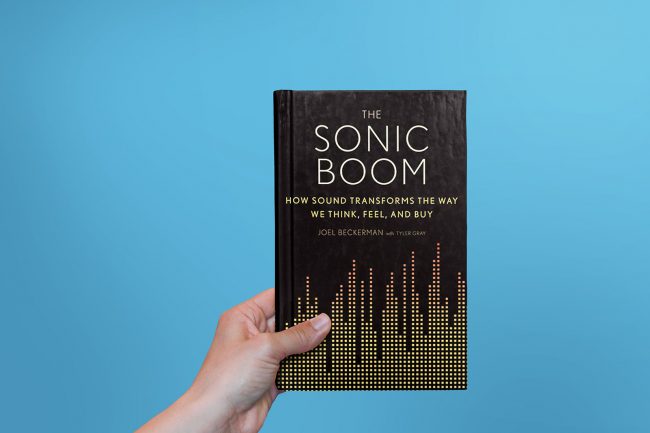
There is no doubt that throughout the nearly 170 pages that is Sonic Boom the passion and sense of necessity for Sonic branding resonates throughout this book. The theme of the book is based around creating what the authors describe as “Boom Movements” These movements are what I would describe as inseparable, distinguishable traits of a brand or products as related to sound.
For example, the authors, on numerous occasions, pointed toward the famed startup sound of an Apple computer. …All part of an otherwise well-rounded brand.
Additionally, the authors also strived to differentiate between a sonic logo, a jingle, an anthem, a score…and just sonic trash. Of course, this is all in attempt to establish the importance of each type of sonic installment and its hefty weight on brand perception, brand recall, emotional marketing, and experience development as is the case of Disney Theme Parks.
While Sonic Boom did undoubtedly make me more aware of sounds and even the lack thereof on my human experience, I found it to be over-zealous and often pushy in terms of its agenda to establish tone as the most powerful of the senses, and the one marketers should pay the most attention too. I humbly disagree with this stance.
Sonic Boom opens with the description of a restaurant: Margaritas shaking and the sounds of sizzling food being passed by a table. Undoubtedly, Beckerman is describing Chili’s and references the fajitas and the creation of their sounds as being a “boom movement” and a key marker of the success of the fajita dish and Chili’s in general. However, in this example, he fails to pay homage to the smell. In fact, per the Telegraph’s most recent article titled “Smells can trigger emotional memories,” It references the power of fragrance as one of the most powerful senses to recall memory as discussed by numerous researchers. And since smell is also tied directly to taste, it is reasonable to argue a passing smell of grilled onions and bell peppers is just as likely to trigger a desire for fajitas as the sizzling noise.
Continuing our journey as exploring smell as almost as equal to sound in recalling events. Let us explore Apple computers for a moment. I am undoubtedly a die-hard fan of Apple computers and have been since they were on the ropes in the early to mid 90’s. However, the startup sound can be just as much a reminder of frustration when a machine goes array as it is a signal of Zen, or strength. I purchase a new device about every month from Apple, mostly for work. I can tell you I look forward just as much to the smell of the new machine as I do the startup sound. This is perhaps the same argument as to why, according to the Harvard Business Review, Auto makers fine tune and formulate their new car smell just as much as any other sense in the overall perception of their new vehicle.
Abercrombie and Fitch is a good example as to the use of smell in branding. They spend just as much effort branding their smell and making sure they have effectively carpet bombed open air malls with it just as much as they exert effort into the sound and layout of the store. The reason? Strong recall. It also has just as much of a negative effect as the books “sonic trash” concept. Time experts surmised that some of the scents found in Abercrombie stores make people anxious.
Now my intent is not to disprove the merits of cases presented in The Sonic Boom, and the importance of audio in branding. Nor, am I, at this point trying to establish Smell as more powerful than audio, or any of the other senses for that mater. Simply, what I am purporting is that all senses are necessary in the development of a well-rounded brand. They all feed into brand and product perception in specific ratios. From the look and feel of a package to the fit, finish, sound and smell of a car. They all contribute to a consumer’s experience including execution. In fact, Harvard business Reviews article on the “Science of Sensory Marketing” equally claims all of them as being of great importance.
ATT has a great sonic logo, theme, visual ads, and alike. However, they all serve to remind me of my now blind hatred for their service and the lifetime spent on hold listening to that Jingle and Sonic Logo. If Apple computers were a pile of junk, the startup sound would mean little to reinforce the brand. After all, the now debunk Gateway Computers had a sonic startup, and Microsoft Windows has had several. Then, of course, there are the Imagineers at Disney. Frankly, they appeal to and control every sense humanly possible to ensure your interaction with their brand is enough to outweigh the looming credit card bill that is to follow post-experience (which, by the way, is when they send their offers and surveys).
In my research: Business Insider, Content Marketing Institute, and Harvard Business Review all point to one key point, and my take away for this review. Smart marketers appeal to all five senses–if possible. Each one of the senses, sound included, enhance the experience, but they are all necessary to make the experience. And although I am now more aware of sound as part of a marketing toolbox and will not argue its importance–I cannot agree with them as to sounds seemingly over a critical role in branding.
